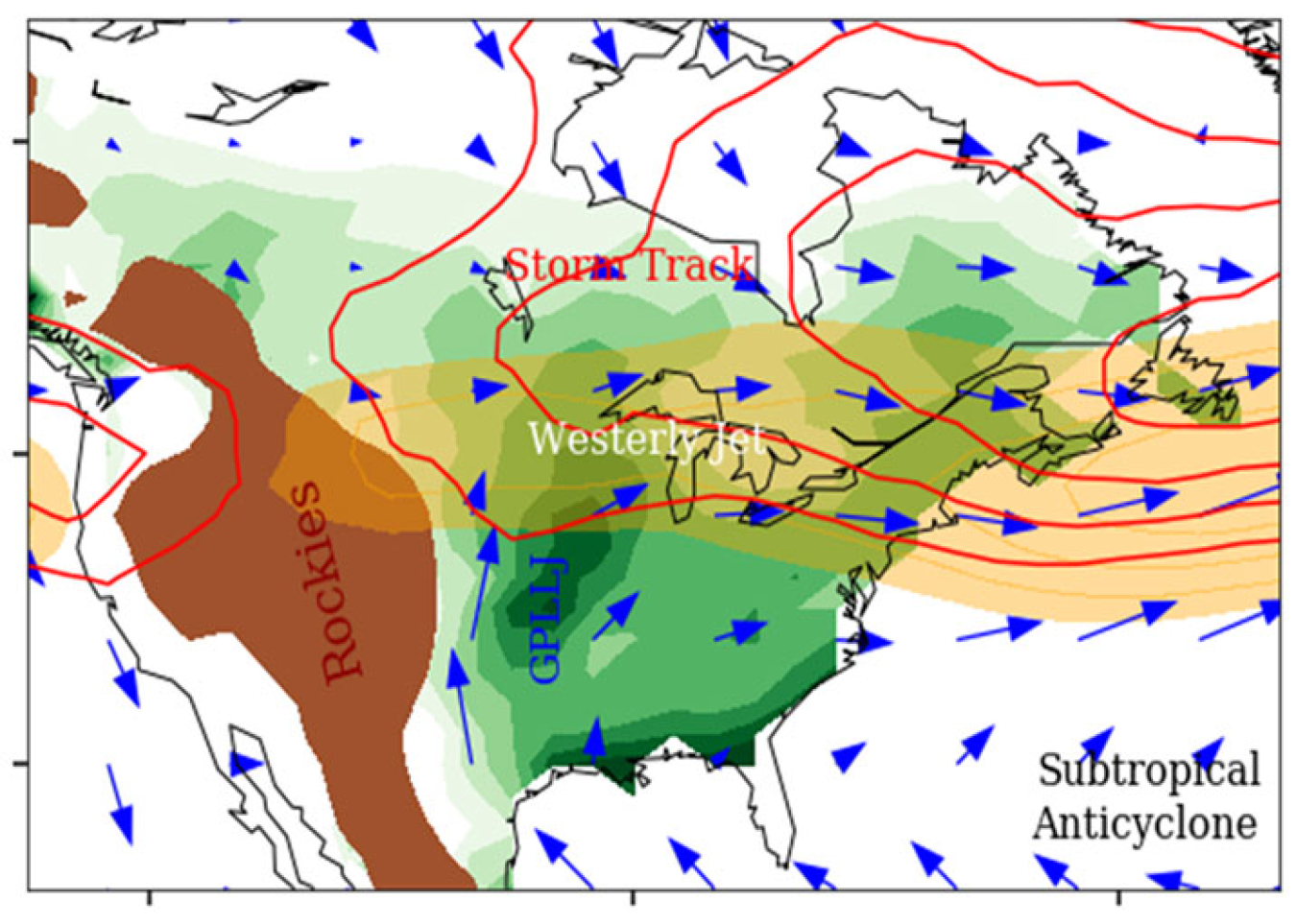
The Science
Understanding the effects of global warming on regional precipitation is an important challenge. The midwestern United States currently receives abundant rainfall. However, climate models are uncertain about projections of future changes in Midwest rainy season rainfall. This study revealed the critical role of a poleward jet shift in driving seasonally dependent changes in precipitation in the U.S. Midwest. The jet is the North American westerly jet, a strong and narrow belt of wind. The study found that future mean precipitation during the Midwest rainy season will not change significantly relative to current precipitation. It did, however, find a substantial increase in the late spring precipitation and a decrease in the late summer precipitation. The study indicates these changes will be driven by the poleward shift in the jet. These results deepen scientific understanding of future changes in the climate of the U.S. Midwest. The results also improve scientists’ confidence in the predictions of climate models.
The Impact
The U.S. Midwest is one of the most important agricultural regions in the world. This means that the way its climate and water cycle respond to global warming will have significant societal and economic impacts. The predicted change in precipitation patterns will likely make extremely wet late springs and extremely dry late summers much more common. This implies an increased risk of late-spring deluges and late-summer droughts for the Midwest.
Summary
This study by scientists at Pacific Northwest National Laboratory investigated the response of the U.S. Midwest hydroclimate to global warming, based on both the Coupled Model Intercomparison Project (CMIP) Phase 6 and the Initial-condition Large-ensemble Simulations. Hydroclimate research integrates hydrology and climate to examine how water moves through the Earth’s ecosystem and its relationship to climate and weather on multiple scales.
The research found that future hydroclimate changes in the Midwest will feature increased precipitation in April and May, but reduced precipitation in July and August. The warming-induced poleward jet shift drives these patterns as it enhances the low-level southerly winds in late spring but suppresses weather disturbances, or the storm track, in late summer. The effect of the poleward jet shift can be understood as an analog to the climatological seasonal progression. As the westerly jet shifts poleward under global warming, it becomes closer to the Midwest before June and leads to more precipitation. After June, the jet moves farther away from the Midwest, leading to less precipitation. The resulting, extremely wet, late springs and extremely dry, late summers will occur much more frequently in a warmer future. A once-in-a-century event in the historical period could become a once-in-a-decade event by the end of this century under a high emission scenario. The severity of such climate impacts has been obscured in previous projections that just examined the rainy season mean.
Contact
L. Ruby Leung
Pacific Northwest National Laboratory
[email protected]
Funding
This study was supported by Department of Energy Office of Science, Biological and Environmental Research program as part of the Regional and Global Model Analysis and Multisector Dynamics program areas. We acknowledge the World Climate Research Program Working Group on Coupled Modelling, which is responsible for the CMIP. The U.S. CLIVAR (Climate and Ocean: Variability, Predictability and Change) Working Group on Large Ensembles provided the Multi-LENS archive.
Publications
Zhou, W., , Leung, L.R., and Lu, J., Seasonally Dependent Future Changes in the U.S. Midwest Hydroclimate and Extremes. Journal of Climate 35 (1) 17-27. [DOI: 10.1175/jcli-d-21-0012.1]

